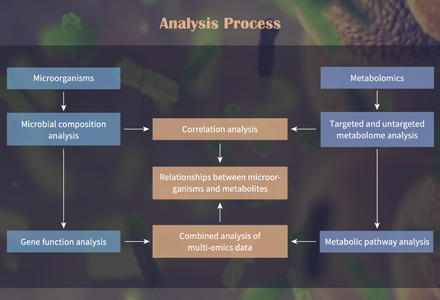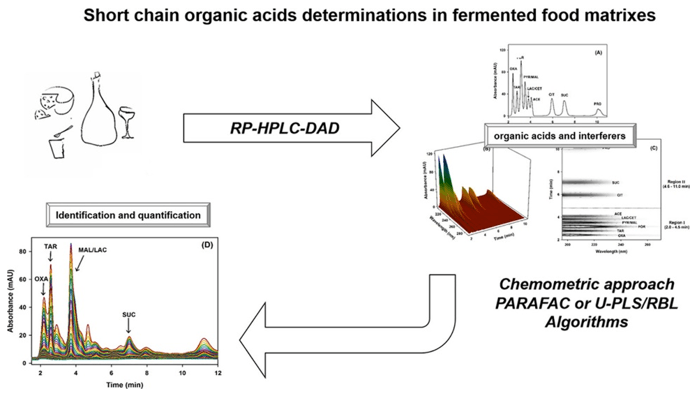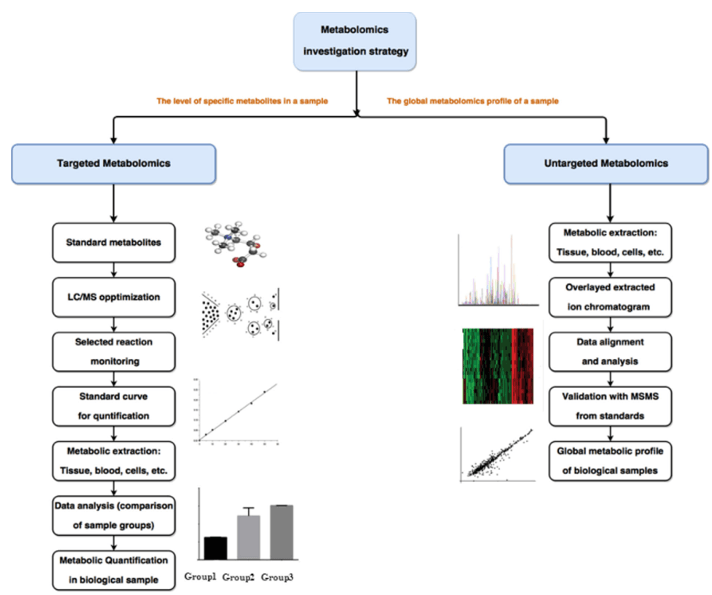Pyruvic Acid and its Derivatives Assay
Submit Your InquiryWhat is Pyruvic Acid?
Pyruvic acid, also known as 2-oxopropanoic acid, is a simple organic compound with the molecular formula C3H4O3. It is an intermediate product of glucose metabolism and is generated through the breakdown of glucose during glycolysis. Pyruvic acid acts as a central hub in cellular metabolism, playing a pivotal role in numerous biochemical pathways.
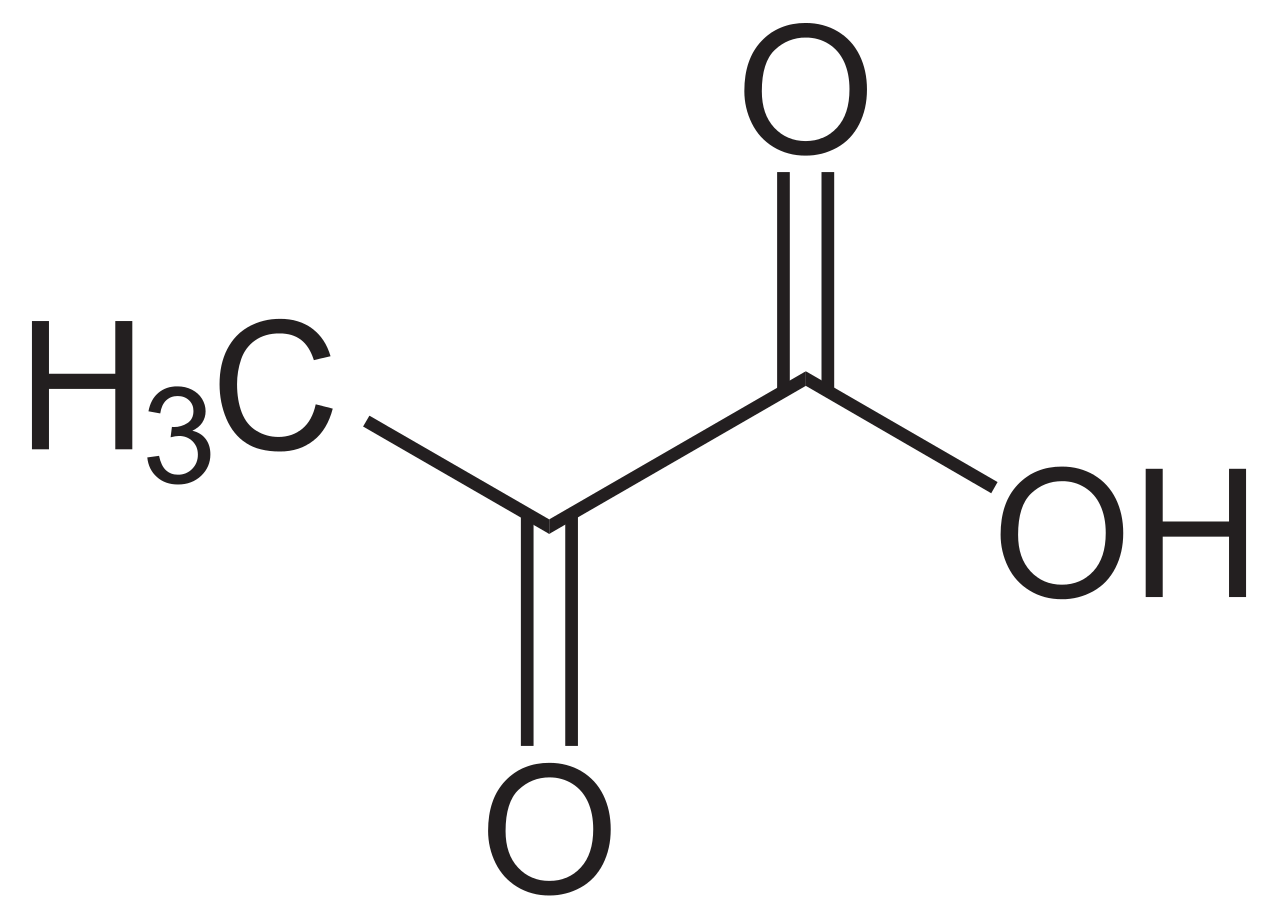 Molecular structure of pyruvic acid
Molecular structure of pyruvic acid
Pyruvic Acid in Cellular Metabolism:
Pyruvic acid serves as a critical molecule in several metabolic processes. Let's explore some of its notable roles:
- Energy production: During aerobic respiration, pyruvic acid is further oxidized in the mitochondria, leading to the production of adenosine triphosphate (ATP), the cellular energy currency. This process, known as the citric acid cycle or Krebs cycle, converts pyruvic acid into acetyl-CoA, which then enters the cycle to generate ATP.
- Anaerobic metabolism: In the absence of oxygen, pyruvic acid can undergo fermentation to produce energy. This process occurs in microorganisms, such as yeast, where pyruvic acid is converted into ethanol or lactic acid, depending on the organism.
- Amino acid synthesis: Pyruvic acid serves as a precursor for the synthesis of several amino acids, including alanine, serine, and glycine. Through various enzymatic reactions, pyruvic acid is transformed into these amino acids, which are essential building blocks for protein synthesis.
- Gluconeogenesis: Pyruvic acid can be converted back into glucose through gluconeogenesis. This process primarily occurs in the liver during periods of fasting or low blood sugar levels. By synthesizing glucose from pyruvic acid, the body ensures a steady supply of fuel for vital organs, such as the brain.
What are Pyruvic Acid Derivatives?
Apart from its crucial role as an intermediate metabolite, pyruvic acid gives rise to various derivatives, each with its own significance in cellular processes. Some notable derivatives of pyruvic acid include:
- Lactic Acid: Under anaerobic conditions, pyruvic acid is converted into lactic acid by the enzyme lactate dehydrogenase. This conversion is essential to regenerate the coenzyme NAD+ required for glycolysis to continue. Lactic acid accumulation can occur during intense exercise, leading to muscle fatigue and cramps.
- Acetyl-CoA: Through oxidative decarboxylation, pyruvic acid is converted into acetyl-CoA, a pivotal molecule in cellular respiration. Acetyl-CoA serves as a substrate for the citric acid cycle and enters the pathway to produce ATP and reducing agents like NADH and FADH2.
- Alanine: Transamination of pyruvic acid with the amino acid glutamate results in the formation of alanine. Alanine serves as an important carrier of amino groups and plays a role in the transport of nitrogen between tissues.
Pyruvic Acid and its Derivatives Assay at Creative Proteomics
Understanding the dynamics of pyruvate and its derivatives in a variety of biological systems requires specialized assays and analytical techniques. Creative Proteomics offers a comprehensive range of pyruvate assay services:
- Quantification of pyruvate: Provides quantitative analysis of pyruvate levels in a variety of biological samples to obtain information on metabolic dysregulation associated with diseases such as diabetes, cancer and metabolic disorders.
- Analysis of Pyruvate Derivatives: Accurate measurement of pyruvate derivatives, including lactate, acetyl CoA and alanine, helps to assess metabolic fluxes and investigate specific metabolic pathways.
- Metabolomics studies: Provides comprehensive metabolomics services, including targeted and untargeted analyses. Provides insight into global metabolic profiles and identifies potential biomarkers or therapeutic targets by combining pyruvate assays with metabolomics.
Technical Route of Targeted Metabolomics of Pyruvic Acid
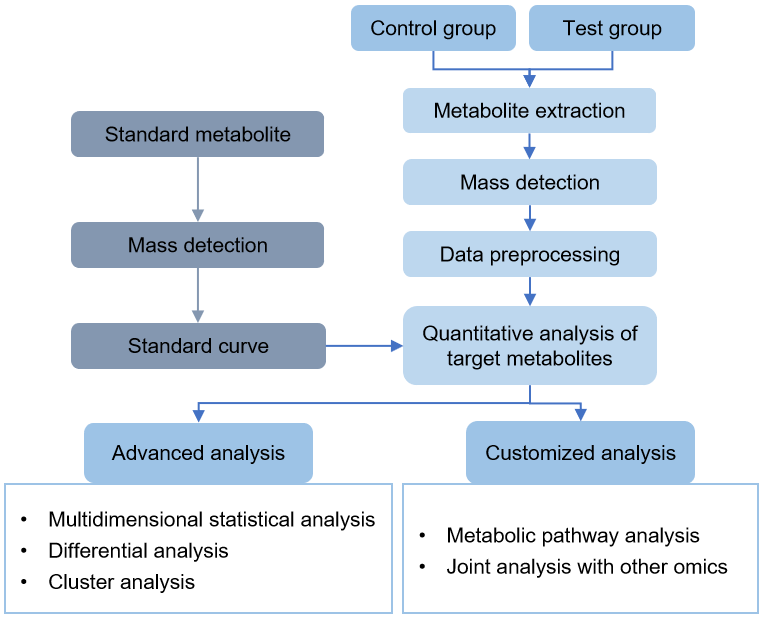
Sample Requirements of Pyruvic Acid and its Derivatives Analysis
| Sample Requirement | Recommended Value |
|---|---|
| Sample Type | Blood, plasma, serum, urine, tissue extracts, cell culture media |
| Sample Collection | Use appropriate collection methods and containers to avoid contamination. Collect blood using anticoagulant tubes. Preserve urine samples with suitable preservatives. |
| Sample Quantity | Blood: 1-2 mL |
| Urine: 5-10 mL | |
| Tissue: 50-100 mg | |
| Sample Storage | Blood, plasma, serum: Store at -80°C or below |
| Urine: Store at -20°C or below | |
| Tissue extracts: Store at -80°C or below | |
| Cell culture media: Store at -20°C or below | |
| Sample Preparation | Centrifuge samples at 1000-2000 × g for 10 minutes to remove debris |
| Filter samples through 0.2 μm filters to remove particulate matter | |
| Protein precipitation may be required for some sample types | |
| Stability and Handling | Avoid repeated freeze-thaw cycles. Protect samples from light exposure. Minimize sample handling and ensure proper sealing. |
| Quality Control | Include quality control samples with known pyruvic acid concentrations |
| Documentation | Label samples with unique identifiers and record relevant information. Maintain proper documentation of sample source, collection date, etc. |
Feedback to Customers
- Experimental steps
- Related mass spectrometry parameters
- Part of the mass spectrum picture
- Raw data
Project Cycle
- A standard experiment and analysis process takes about 1~4 weeks.
Creative Proteomics offers several approaches to metabolomics studies, delivers precise and detailed data and analysis report. We can also customize the methods or establish new methods together with our collaborators, so they are fit-for-purpose and meet your specific needs. If you have any questions or specific requirements, please feel free to contact us.
References
- Hatoum D, Annaratone C, Hertog M, et al. Targeted metabolomics study of 'Braeburn'apples during long-term storage. Postharvest Biology and Technology, 2014, 96: 33-41.
- Griffiths W J, Koal T, Wang Y, et al. Targeted metabolomics for biomarker discovery. Angewandte Chemie International Edition, 2010, 49(32): 5426-5445.
- Mohammed A, Hussain R M, Ur R N, et al. De novo transcriptome sequencing and metabolite profiling analyses reveal the complex metabolic genes involved in the terpenoid biosynthesis in Blue Anise Sage (Salvia guaranitica L.). DNA Research (6):6.




